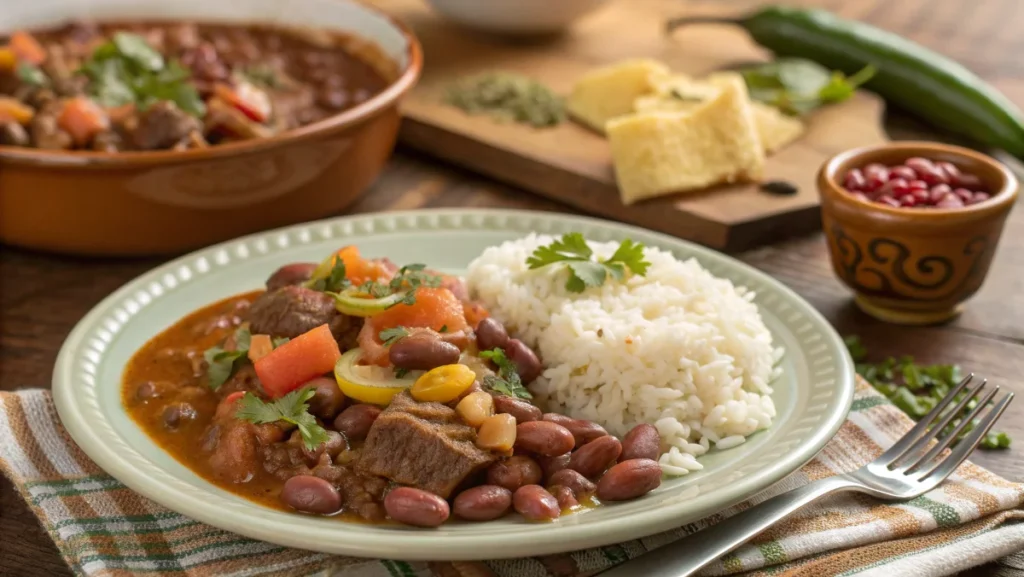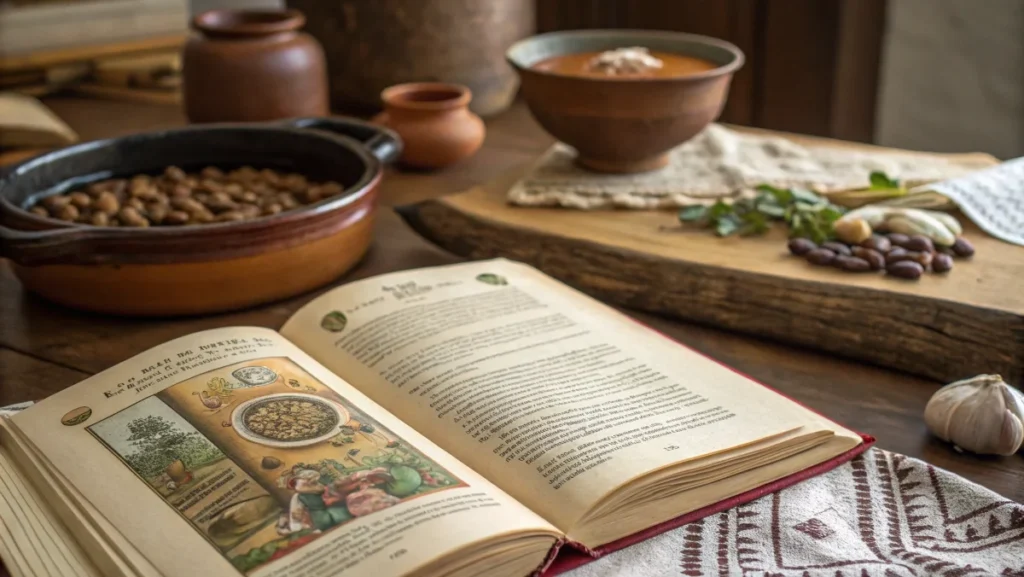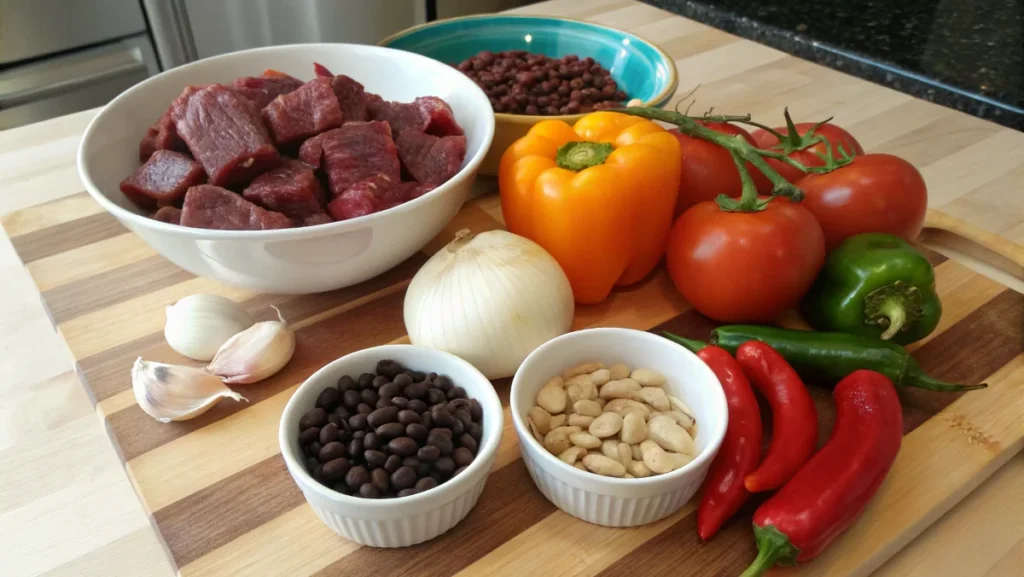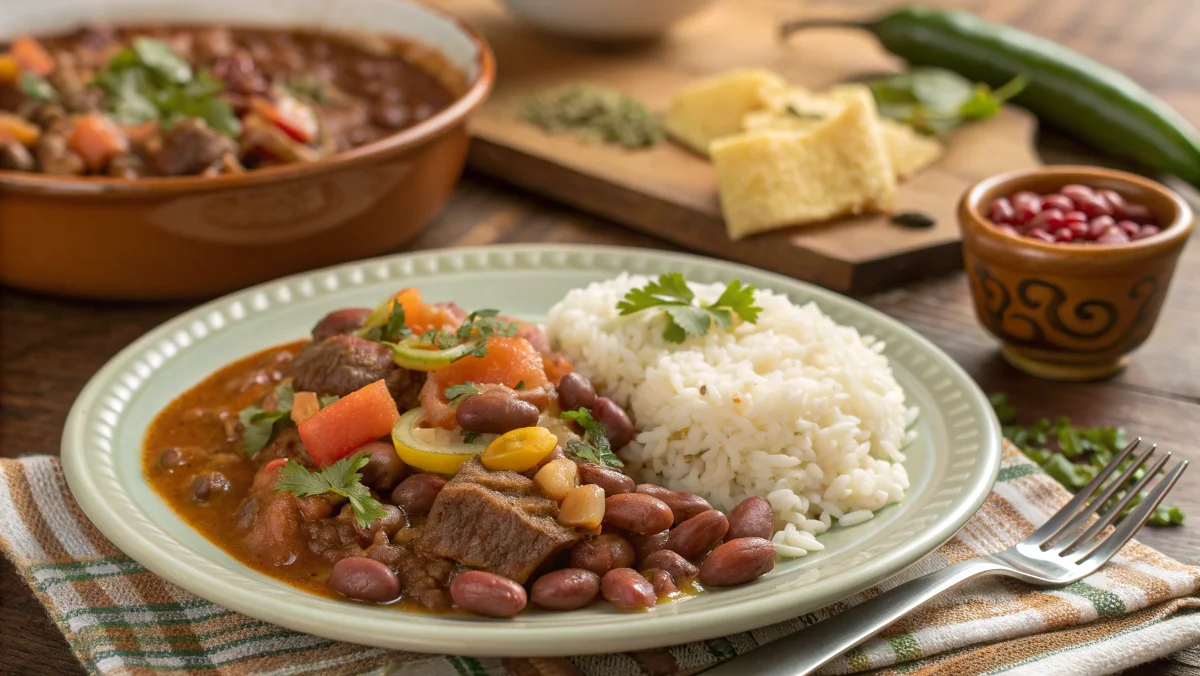Habichuelas, often referred to as beans, are a staple ingredient in many cuisines around the world. Particularly popular in Latin American and Caribbean dishes, habichuelas come in various types, flavors, and forms. But, what exactly are habichuelas? The term itself simply refers to beans, yet its significance and usage can vary depending on the region.
Furthermore, habichuelas are much more than just a common food. They play a vital role in nutrition, culture, and tradition. For instance, habichuelas are often included in everyday meals, contributing both to the taste and to the nutritional content. In this section, we will dive deeper into the basic understanding of habichuelas, exploring their meaning, significance, and culinary importance.
What are Habichuelas?
In essence, the term habichuelas refers to beans, but the types of beans and their names vary based on geographical location. For example, in the Dominican Republic and other Caribbean countries, habichuelas can refer to kidney beans or even other varieties like pinto beans and black beans.
This flexibility in naming reveals the diverse ways habichuelas are used in different regions. No matter the variety, habichuelas are loved for their versatility and ability to complement a wide range of dishes, from soups to stews, and even salads. To delve deeper into their significance and find inspiring recipes, explore Habichuelas: A Latin American Staple – Benefits, Varieties & Recipes. This resource highlights their cultural importance and culinary adaptability.

Table of Contents
The Meaning of Habichuelas Across Different Cultures
The word habichuelas may hold different meanings and uses depending on the culture. In many parts of Latin America, the term is a broad reference to beans in general. However, it’s essential to note that the specific varieties and preparations differ between countries.
- In the Dominican Republic, habichuelas often refers to kidney beans, which are usually cooked in a hearty stew or served as a side dish.
- In Puerto Rico, people may refer to black beans or red beans as habichuelas, often cooked with sofrito, a combination of garlic, onions, and peppers, to create rich and flavorful stews.
- In Cuba, habichuelas are often used interchangeably with the term “frijoles” (beans) and are prepared in a similar style with a heavy emphasis on slow cooking and seasoning.
Overall, the term habichuelas reflects both the variety of beans available and the versatility in how they are incorporated into the daily diets of Latin American cultures.
Types of Beans Referred to as Habichuelas
Understanding what types of beans are referred to as habichuelas is important when discussing Latin American cuisine. While the term can be broad, several types of beans are most commonly used. Here are some popular varieties:
- Kidney Beans: Commonly referred to as habichuelas rojas, these beans are widely used in Dominican cuisine.
- Black Beans: These are central to Cuban and Puerto Rican dishes, often known as habichuelas negras.
- Pinto Beans: Often used in stews, these beans are considered a staple in many Latin American countries.
- White Beans: These beans, such as habichuelas blancas, are versatile and commonly cooked in soups and stews.
Each of these beans brings a unique flavor and texture to dishes, and their preparation can vary depending on the country and tradition.
The Historical Origins of Habichuelas in Latin America
To understand habichuelas today, it’s crucial to examine their history. Beans, in general, are native to the Americas, where they have been cultivated for thousands of years. Habichuelas specifically are believed to have been introduced to Latin America by Indigenous peoples, and over time, different varieties of beans were developed and integrated into the region’s cuisine.
The cultivation and use of beans were influenced by the ancient civilizations of the region, such as the Maya and Aztecs, who incorporated beans into their diets as a key source of protein. Through trade and colonization, beans spread to other parts of the world, further cementing their status as a global food.
As Latin America became more diverse due to European colonization, the influence of African and European culinary traditions also impacted the ways habichuelas were prepared. This resulted in the wide variety of methods and recipes we see today. For a delightful recipe showcasing flavorful innovation, check out Sweet and Sour Meatballs Recipe – Simple and Flavorful. This dish highlights the versatility of ingredients and culinary creativity.

Nutritional Profile of Habichuelas: A Healthy Choice
Habichuelas offer a range of nutritional benefits that make them an excellent choice for a healthy diet. Beans are generally known for their high protein content, making them an essential food for vegetarian and vegan diets. Here’s a closer look at the nutritional profile of habichuelas:
- High in Protein: Habichuelas provide a great source of plant-based protein, which is crucial for muscle repair and overall body function.
- Rich in Fiber: Beans are an excellent source of dietary fiber, which promotes digestive health and helps regulate blood sugar levels.
- Packed with Minerals: Habichuelas contain significant amounts of essential minerals such as iron, magnesium, and potassium.
- Low in Fat: Most types of beans are naturally low in fat, making them an ideal food choice for anyone watching their fat intake.
Therefore, incorporating habichuelas into your meals can provide numerous health benefits, from supporting muscle growth to improving heart health.

Common Culinary Uses of Habichuelas in Traditional Dishes
In Latin American and Caribbean cuisine, habichuelas are an indispensable ingredient. From soups to stews, these beans are incredibly versatile and are prepared in various ways. Some common dishes that feature habichuelas include:
- Habichuelas Guisadas (Stewed Beans): This is a classic Dominican dish where beans are stewed with vegetables, meats, and a combination of seasonings such as garlic, onions, and bell peppers.
- Arroz con Habichuelas (Rice with Beans): In Puerto Rico and the Dominican Republic, rice and beans are a staple combination often served with meats like chicken or beef.
- Frijoles Negros (Black Beans): A popular Cuban dish where black beans are slow-cooked with spices, herbs, and sometimes a touch of vinegar.
- Habichuelas con Puerco (Beans with Beef): This traditional dish combines beans with beef, often in the form of beef chunks or slow-cooked beef stew.
These are just a few examples, but the possibilities are endless when it comes to cooking with habichuelas. Whether in soups, stews, or as a side dish, they remain a beloved and essential component of many Latin American meals. For an equally versatile dish, learn about portioning and preparation with How Much Beef Wellington Per Person?. This guide helps ensure perfect servings for your next culinary masterpiece.
Regional Variations in Habichuelas Recipes
The way habichuelas are cooked and served can vary significantly across different regions. Each country or region has developed unique recipes and preparations that reflect local ingredients, culinary traditions, and tastes. Some examples of regional variations include:
- In Puerto Rico, habichuelas are typically cooked with a sofrito, a base of sautéed onions, garlic, peppers, and herbs. The beans are then stewed until tender and flavorful.
- In the Dominican Republic, habichuelas guisadas are a common dish, where beans are cooked with a variety of vegetables, meat, and seasonings. It is often served with rice for a hearty, filling meal.
- In Cuba, black beans are often slow-cooked with a mix of aromatic herbs, creating a dish that’s both savory and slightly tangy due to the addition of vinegar or citrus.
Such regional variations showcase the adaptability of habichuelas, allowing them to fit seamlessly into a wide array of culinary traditions.
How to Prepare and Cook Habichuelas: Tips for Beginners
For those new to cooking with habichuelas, it’s essential to know the basic preparation steps. Here are some tips to ensure your habichuelas turn out perfect every time:
- Soaking: Many types of dried beans, such as kidney and pinto beans, should be soaked before cooking. This helps reduce cooking time and improves the texture of the beans.
- Rinse Before Cooking: Always rinse beans thoroughly before cooking to remove any dirt or impurities.
- Use Aromatics: Adding aromatics like garlic, onions, and herbs can enhance the flavor of the beans. These ingredients create a depth of taste that elevates the dish.
- Slow Cooking: For the best texture and flavor, beans should be cooked slowly. This allows the beans to absorb all the seasonings and develop a rich flavor.
Whether you’re making a simple bean stew or a complex dish, following these basic steps can help you get the most out of your habichuelas.
Habichuelas in Modern Cuisine: Creative Recipes and Ideas
In modern cuisine, habichuelas continue to be a versatile and essential ingredient. As the world of cooking evolves, so do the ways in which habichuelas are incorporated into meals. Today, creative chefs and home cooks alike have found new ways to incorporate habichuelas into trendy dishes. Some modern ideas include:
- Bean Tacos: Using seasoned habichuelas as a filling for soft tacos, combined with avocado, lettuce, and salsa, is a fresh take on the classic bean-based dish.
- Vegetarian Burgers: Habichuelas can be mashed and mixed with grains like quinoa to form delicious plant-based burger patties.
- Bean Salads: Tossing cooked habichuelas with fresh vegetables, herbs, and a tangy vinaigrette makes for a light and nutritious salad.
These creative approaches demonstrate the versatility of habichuelas, showing that they can be adapted for modern tastes and dietary preferences.
The Global Influence of Habichuelas in Contemporary Cooking
Habichuelas have made their mark on cuisines around the world, thanks to their nutritional benefits, versatility, and rich cultural history. From the Caribbean to Latin America and beyond, the influence of habichuelas can be seen in many contemporary dishes.
- In the United States, Latin American and Caribbean restaurants frequently feature habichuelas in their menu offerings, from stews to salads.
- In Europe, beans similar to habichuelas are used in Mediterranean dishes, showcasing the global appeal of beans in everyday meals.
- In Asia, bean-based dishes like stir-fries and soups reflect the growing influence of habichuelas in international culinary traditions.
The spread of habichuelas and their incorporation into global cuisine highlight their universal appeal and enduring popularity.
FAQs:
What Countries Call Beans Habichuelas?
The term habichuelas is commonly used in several Latin American and Caribbean countries to refer to beans. Some of the countries where beans are called habichuelas include:
- Dominican Republic
- Puerto Rico
- Cuba
- Honduras
- El Salvador
In these regions, habichuelas can refer to different types of beans, such as kidney beans, black beans, and pinto beans. The specific variety may vary depending on the country, but the term generally encompasses all types of beans within these cultures. Additionally, in some areas, habichuelas are used in everyday meals, like stews and rice dishes, reflecting their culinary importance.
Are Habichuelas the Same as Kidney Beans?
Although habichuelas is a term used to describe beans in general, in some regions, it specifically refers to kidney beans. For example, in the Dominican Republic, habichuelas rojas refers to red kidney beans, which are commonly used in stews and other traditional dishes. However, it’s important to note that habichuelas can also refer to other types of beans, such as black beans and pinto beans, depending on the country and dish.
Therefore, while kidney beans are often referred to as habichuelas in certain regions, the term can encompass a wider range of beans in various culinary contexts. For a delightful comfort food option that pairs wonderfully with these beans, explore Chicken and Waffles Near Me. This dish combines savory and sweet flavors for a perfect meal experience.
Why Do Puerto Ricans Say Habichuela?
In Puerto Rico, the word habichuela is commonly used to describe beans, especially in dishes like habichuelas guisadas (stewed beans). The use of the term habichuela likely stems from the influence of Spanish colonization, where the word “habichuela” was used to refer to beans in general. Over time, the term became ingrained in Puerto Rican culture, and it is now used as a standard way to refer to beans in both everyday conversation and cooking.
In Puerto Rican cuisine, habichuelas are an essential ingredient, particularly in stews, rice dishes, and as a side dish to meats. The use of the term reflects the deep-rooted culinary traditions in Puerto Rican culture.
Where is Habichuelas From?
The term habichuelas originates from the Spanish language and was brought to the Americas during the period of European colonization. The word itself comes from the Latin “faba,” which means bean, and was adapted by the Spanish during their colonization of the Caribbean and Latin America.
As a result, habichuelas became a popular term for beans in various Latin American and Caribbean countries, including Puerto Rico, the Dominican Republic, Cuba, and other regions. Beans, or habichuelas, are native to the Americas and have been cultivated for thousands of years by indigenous cultures like the Aztecs and Maya. Over time, beans spread across the globe, but their usage and cultural significance remain strong in Latin American and Caribbean cuisine.
Conclusion
In conclusion, habichuelas are much more than just a type of bean; they represent a vital part of Latin American and Caribbean culinary traditions. From their diverse types and regional variations to their significant health benefits, habichuelas continue to play an important role in global cuisine. Whether you’re preparing traditional dishes or experimenting with new recipes, the versatility and nutritional value of habichuelas make them an essential ingredient in any kitchen.
As we’ve seen, the history, culture, and evolving usage of habichuelas reflect their enduring place in the hearts of food lovers worldwide. For more creative meal ideas that complement habichuelas, explore these Chicken Thigh Recipes, offering a perfect pairing for both traditional and contemporary flavors.

